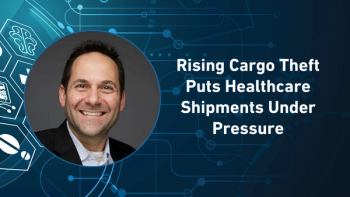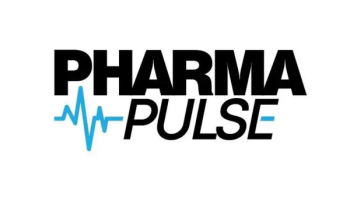
Potential 250% Pharma Tariffs Could Pressure Margins Without Directly Raising Patient Costs
In the first part of his Pharma Commerce video interview, Dave Malenfant, a healthcare supply chain expert, explains how steep pharmaceutical import tariffs might affect costs at different points in the supply chain, why component pricing poses a bigger risk than active ingredients, and how insurers, distributors, and manufacturers may negotiate to shield patients from price increases.
In a video interview with Pharma Commerce, Dave Malenfant, a healthcare supply chain expert, discusses the potential impact of a proposed 250% tariff on pharmaceutical imports, emphasizing that the effect depends heavily on where in the supply chain the tariff is applied. If imposed on active pharmaceutical ingredients (APIs), the impact would be minimal, as APIs contribute relatively little to the total cost of a finished drug and adjustments could be made through negotiation. However, if applied to finished pharmaceuticals or key components—such as bottle plugs, closures, molded parts, and glass—the cost implications could be significant, since these materials represent a substantial portion of overall manufacturing costs.
Malenfant notes that the US conducts much of its pharmaceutical research and development domestically but often outsources manufacturing to lower-cost countries, only to re-import the products for sale. He questions this practice, arguing that products sold in the US should be manufactured domestically to strengthen the supply chain and reduce dependency on foreign production. He cites examples of non-US companies, such as the world’s largest generic drugmaker, establishing manufacturing facilities in the United States as a step in the right direction.
The interview also addresses duty drawback, a current process allowing companies to recover duties paid on imported pharmaceuticals, which the proposed tariff regulation would reportedly eliminate. Without duty drawback, the financial burden on manufacturers and distributors would increase.
While higher component costs could drive up product expenses, Malenfant believes that companies are unlikely to pass these increases directly to patients. Instead, they may absorb the costs by reducing margins, particularly since US pharmacompanies already operate with some of the highest profit margins globally. However, the ripple effect would reach insurance companies, prompting complex negotiations between insurers, distributors, and manufacturers to prevent direct cost increases to patients and maintain access to medications.
He also comments on how the tariff could cascade through the pharma supply chain; the downstream operational challenges that might arise for pharma companies;mitigation strategies industry leaders should already be exploring; and much more.
A transcript of his conversation with PC can be found below.
PC: If a 250% tariff on pharma imports was to be implemented, what would the immediate cost implications look like for manufacturers, distributors, and ultimately, patients?
Malenfant: It depends where the tariff is applied. If you're talking about the active pharmaceutical ingredients, they'll have very minimal impact, as you get into the royalties and all that. When you look at the cost of a pharmaceutical product, a lot of the cost is not in the active ingredient, as much as the components to package it in the processing. If we are buying a finished pharmaceutical and it's got a 250% tariff on it, and the proposed regulation says that there will not be a duty drawback, because right now, on a lot of pharmaceuticals, you have duty drawback, which means you pay duty upfront, and then you can go and apply to the government and draw back.
What that does is it will have a direct impact throughout the entire supply chain, but at the same time, it's telling the US, why aren't we making these pharmaceuticals in the United States? Most of the research and development has been done in the United States, but then we export it out to cheaper countries to make the product, and they import it back in, such as Singapore—I’m not going to talk about India, because India is a unique situation—or other countries, and then we import it back in trying to distribute it within the United States. Good FDA approval and distribute in the United States. I'm not proponent of that. I think if we're going to sell in United States, I firmly believe that we should make it in United States.
An example, Nico, is the largest generic pharmaceutical company in the world is not American, but yet they're now manufacturing in the United States. My view is that, depending on where in the process, is that duty going to apply? Now it says it's going to apply throughout any pharmaceutical, including active pharmaceutical ingredients, components, and manufacturing, but if it's raw materials, active pharmaceutical ingredients will have a very minimal impact on anything, because we can make adjustments in the way we negotiate it.
If it's components like bottle plugs, closures, molded parts, glass, that has a bigger impact, because that is the one of the bigger costs within the main total cost of a pharmaceutical. That will probably increase the cost of the product. Does it mean it's going to be a price increase? I don't believe so. I think the companies will eat it up in their margins, because here in the United States—and I know some of the listening audience will probably not like me saying this—but the US enjoys the largest margins in pharmaceutical drugs in the world.
Having the tariffs, you have to decide, do we eat it in margin, or do we pass it on to the consumer? By the way, it doesn't really get passed on to the consumer, it gets passed on to the insurance companies, and the insurance companies certainly are not going to accept it, so the network is going to be disrupted, and there's going to be a lot of negotiations between the partners, between distributors and insurance companies, to offset it so that there is not a direct impact to the end patient.
Newsletter
Stay ahead in the life sciences industry with Pharmaceutical Commerce, the latest news, trends, and strategies in drug distribution, commercialization, and market access.




